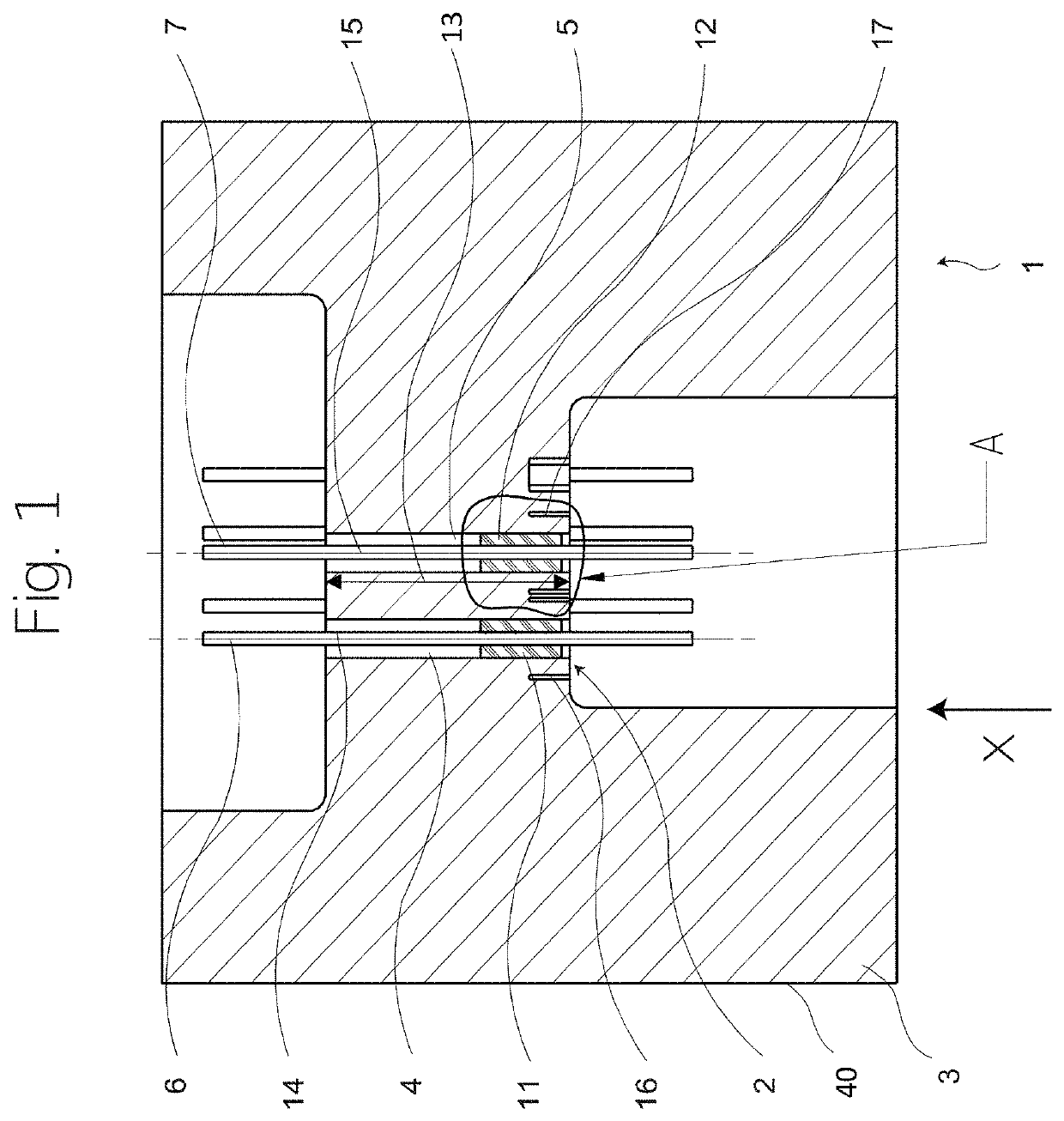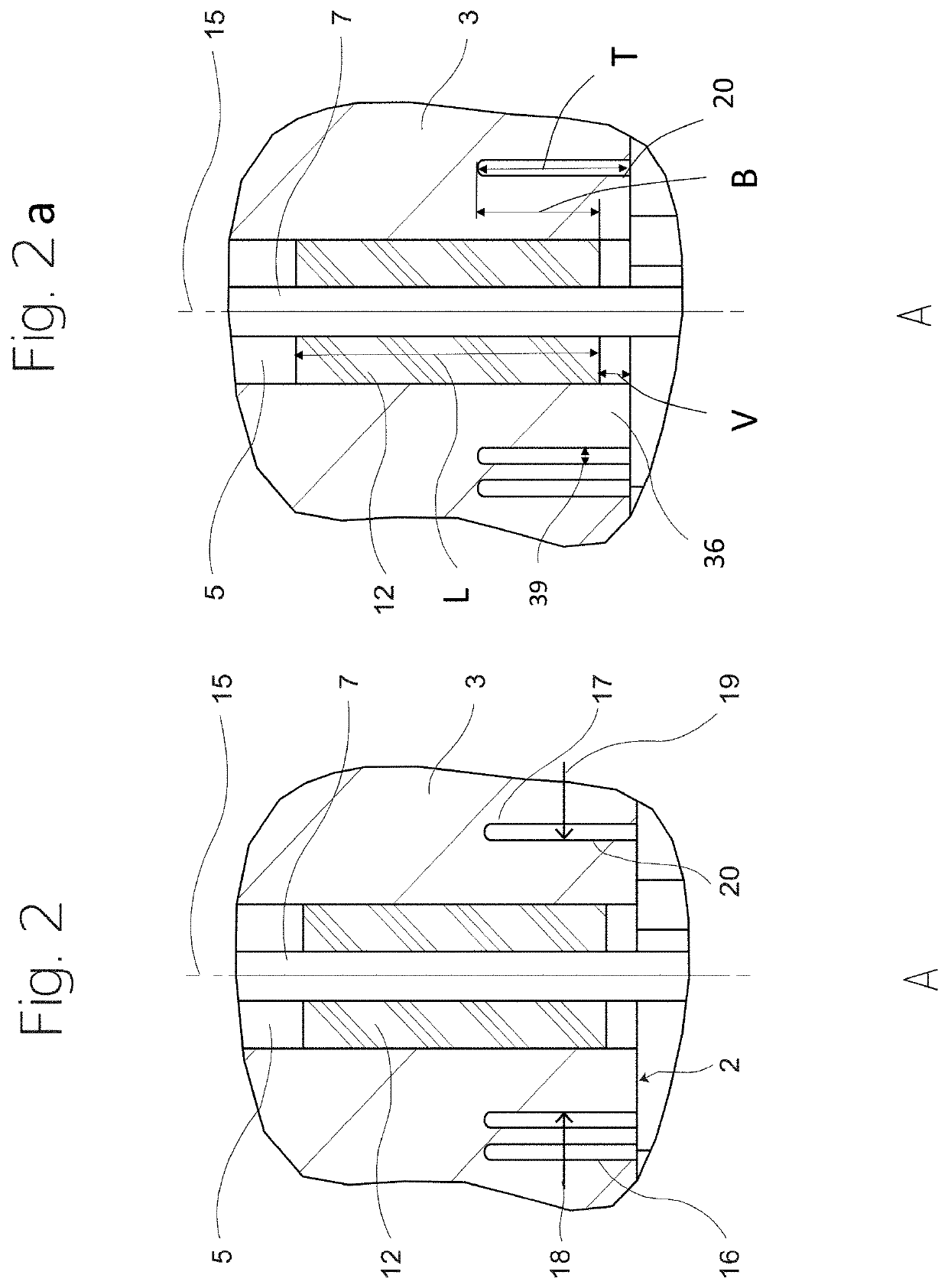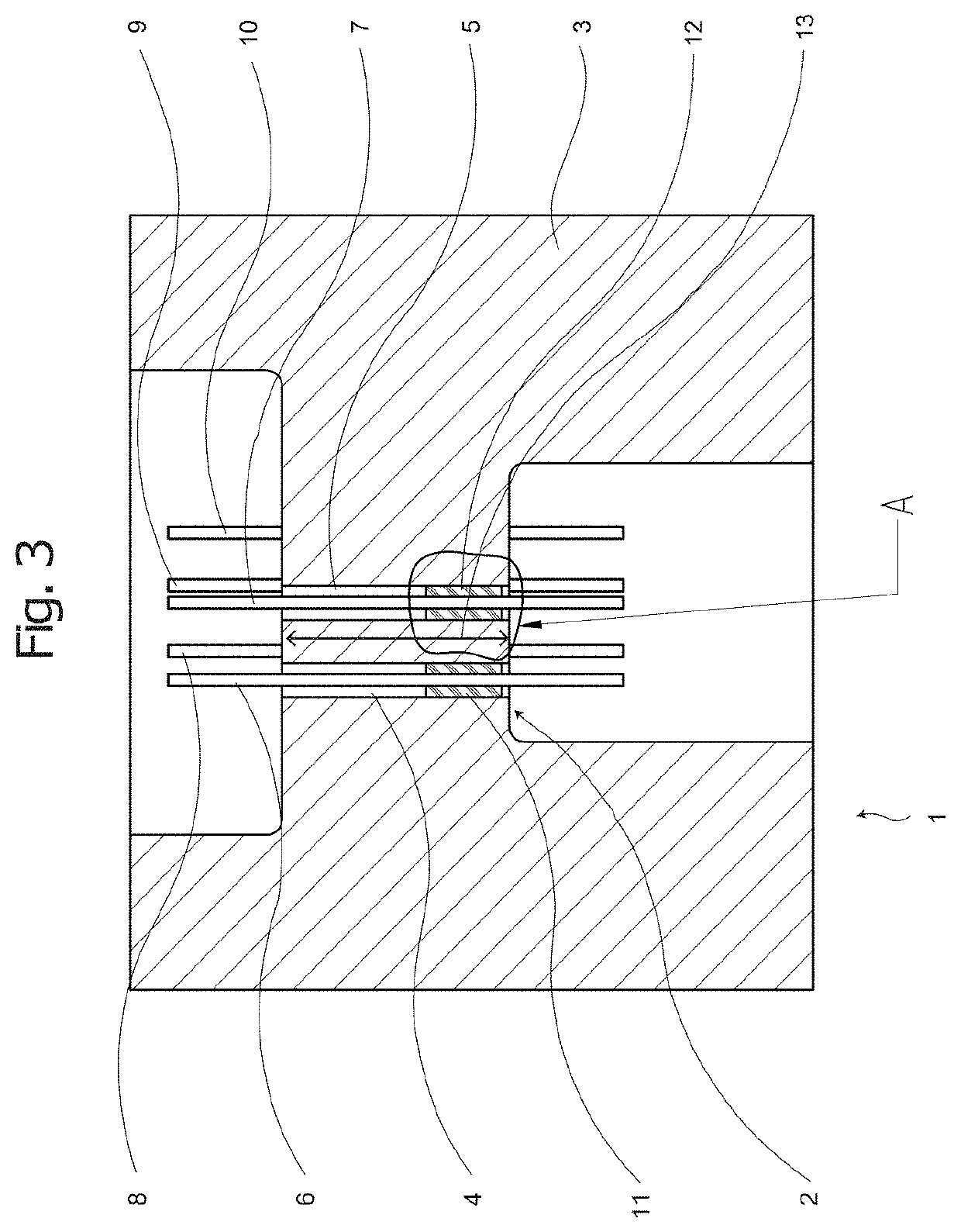Feed-throughs for high external pressure applications and method for producing same
a high external pressure and feed-through technology, applied in the direction of lead-in/lead-through insulators, fuel cell auxiliaries, fuel cell manufacturing, etc., can solve the problems of complex routing geometry of conductors, many times more space consuming than would be necessary, and achieves reduced tendency for spontaneous breakage of insulating materials, high pressure resistance, and reduced production costs
- Summary
- Abstract
- Description
- Claims
- Application Information
AI Technical Summary
Benefits of technology
Problems solved by technology
Method used
Image
Examples
Embodiment Construction
[0073]In the following detailed description of the preferred embodiments, the same reference numerals designate the same functional elements, respectively, and the views are not always drawn to scale, for the sake of clarity.
[0074]First referring to FIG. 3, a feed-through without pressure compensator will be described, in order to be able by way of this description to better understand the effects and advantages according to the invention further below.
[0075]Reference numeral 1 in FIG. 3 designates the feed-through 1 to be described as a whole, which experiences the pressures that are to be mastered by the feed-through 1 at the pressure-facing side 2 of the base body 3, in particular the side facing external pressure.
[0076]Through-holes 4 and 5 extend through the base body 3, with functional elements 6 and 7, respectively, arranged therein, which are retained therein by a compression glass seal, as will be described in more detail below.
[0077]Although further functional elements 8, ...
PUM
| Property | Measurement | Unit |
|---|---|---|
| pressures | aaaaa | aaaaa |
| pressures | aaaaa | aaaaa |
| pressures | aaaaa | aaaaa |
Abstract
Description
Claims
Application Information
 Login to View More
Login to View More - R&D
- Intellectual Property
- Life Sciences
- Materials
- Tech Scout
- Unparalleled Data Quality
- Higher Quality Content
- 60% Fewer Hallucinations
Browse by: Latest US Patents, China's latest patents, Technical Efficacy Thesaurus, Application Domain, Technology Topic, Popular Technical Reports.
© 2025 PatSnap. All rights reserved.Legal|Privacy policy|Modern Slavery Act Transparency Statement|Sitemap|About US| Contact US: help@patsnap.com



